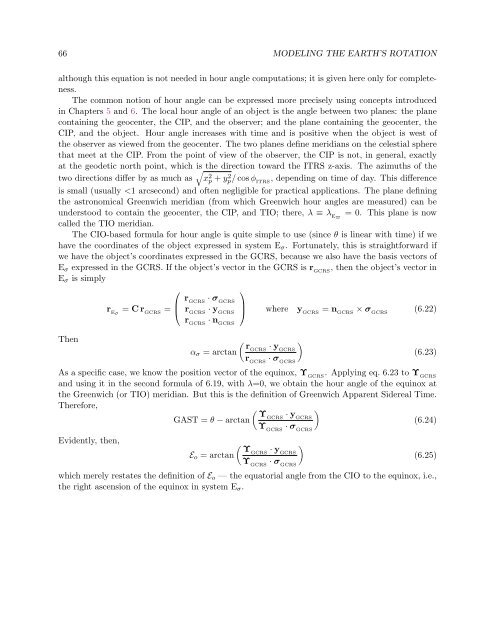USNO Circular 179 - U.S. Naval Observatory
USNO Circular 179 - U.S. Naval Observatory
USNO Circular 179 - U.S. Naval Observatory
You also want an ePaper? Increase the reach of your titles
YUMPU automatically turns print PDFs into web optimized ePapers that Google loves.
66 MODELING THE EARTH’S ROTATION<br />
although this equation is not needed in hour angle computations; it is given here only for completeness.<br />
The common notion of hour angle can be expressed more precisely using concepts introduced<br />
in Chapters 5 and 6. The local hour angle of an object is the angle between two planes: the plane<br />
containing the geocenter, the CIP, and the observer; and the plane containing the geocenter, the<br />
CIP, and the object. Hour angle increases with time and is positive when the object is west of<br />
the observer as viewed from the geocenter. The two planes define meridians on the celestial sphere<br />
that meet at the CIP. From the point of view of the observer, the CIP is not, in general, exactly<br />
at the geodetic north point, which is the direction toward the ITRS z-axis. The azimuths of the<br />
<br />
two directions differ by as much as<br />
x 2 p + y 2 p/ cos φ ITRS , depending on time of day. This difference<br />
is small (usually


